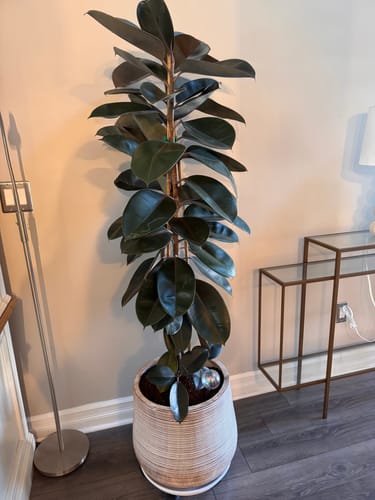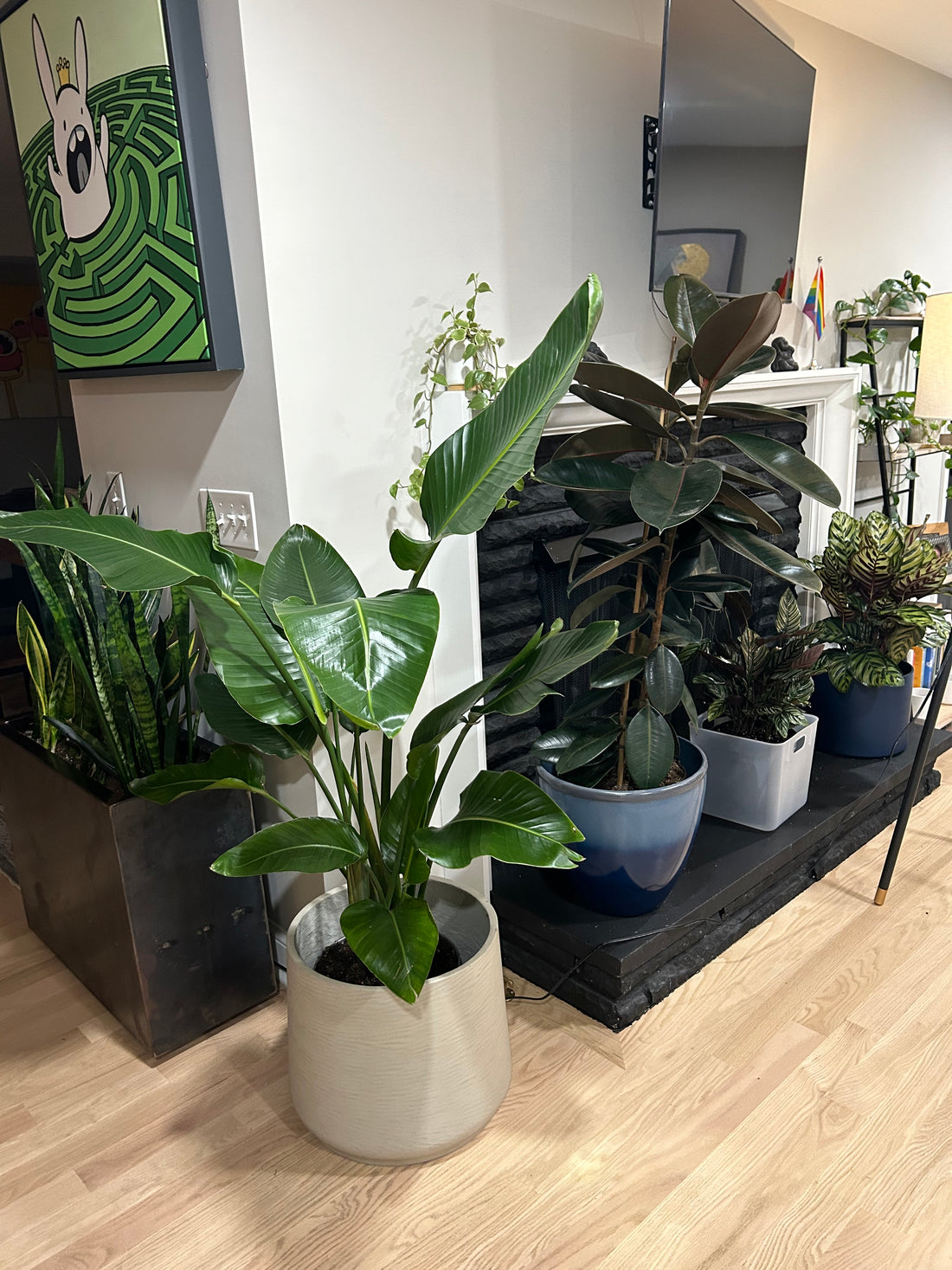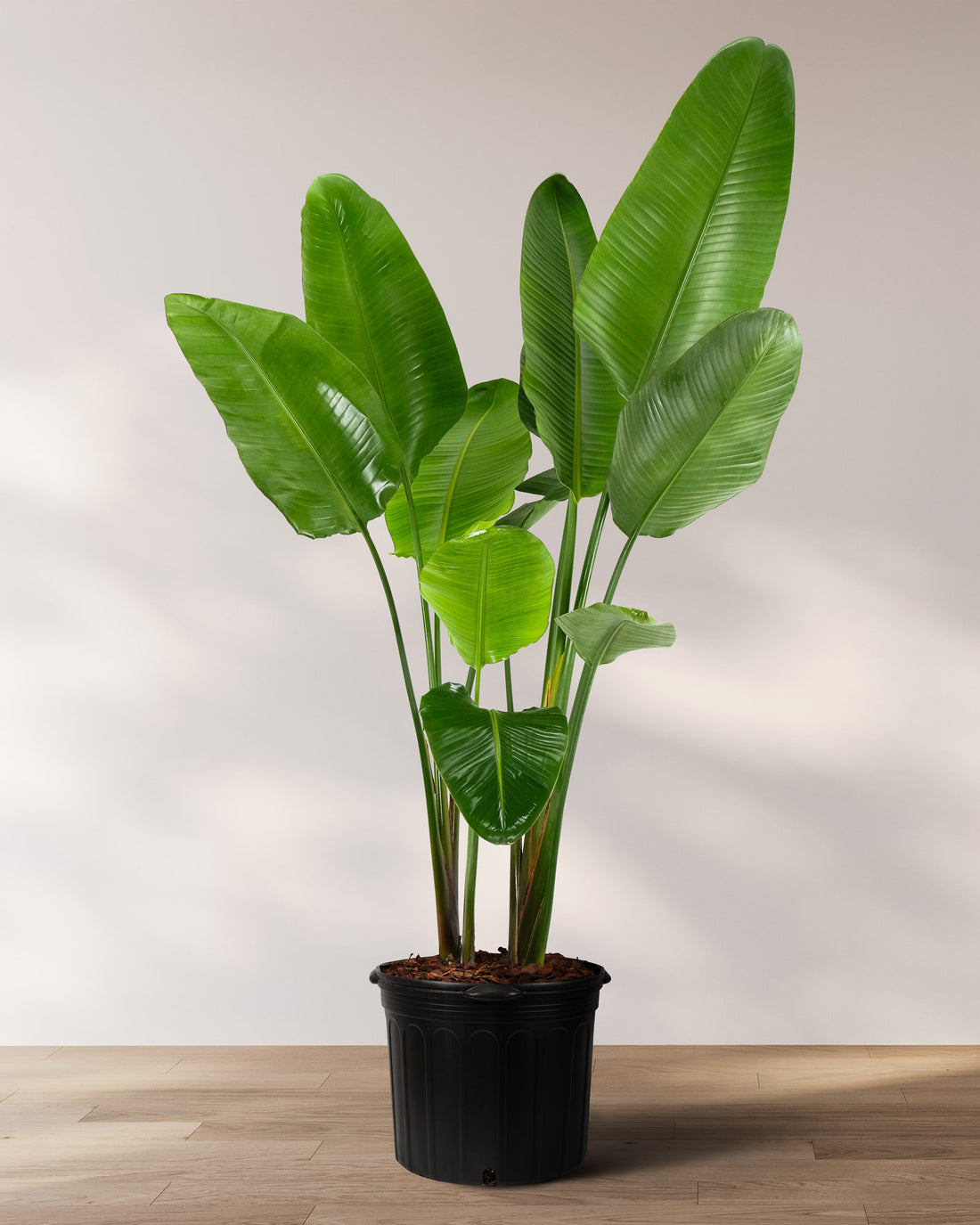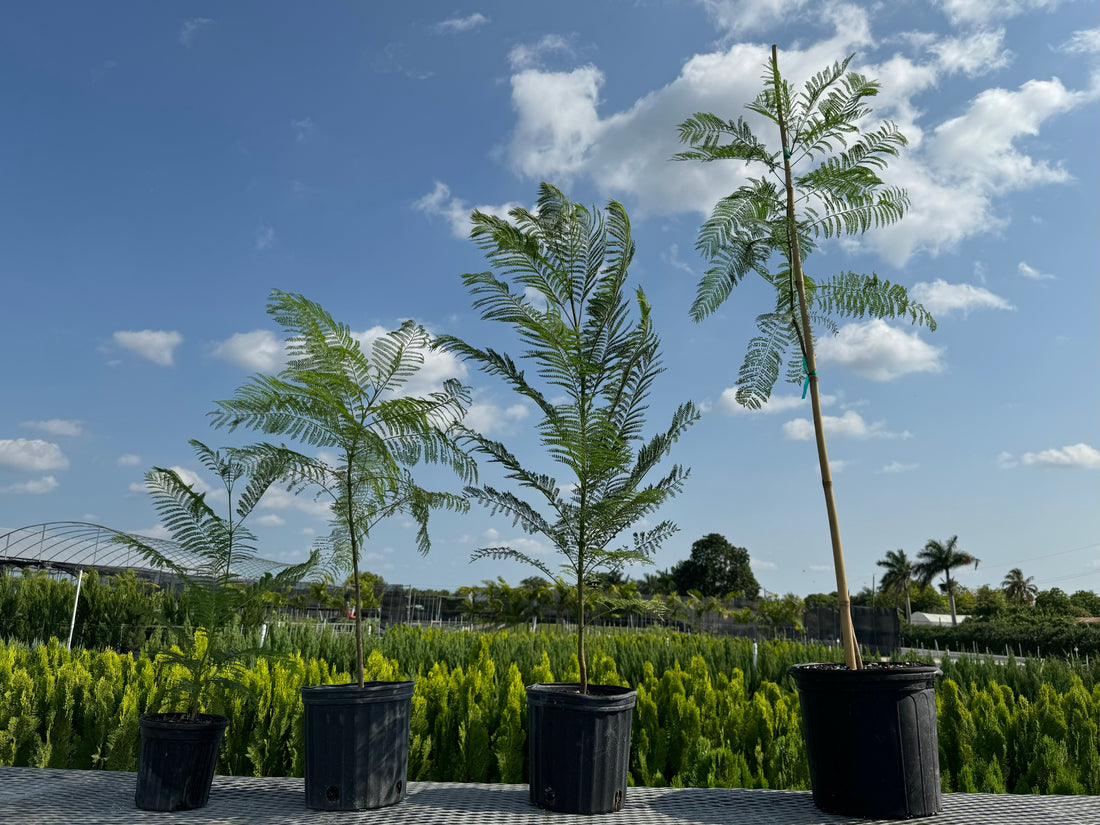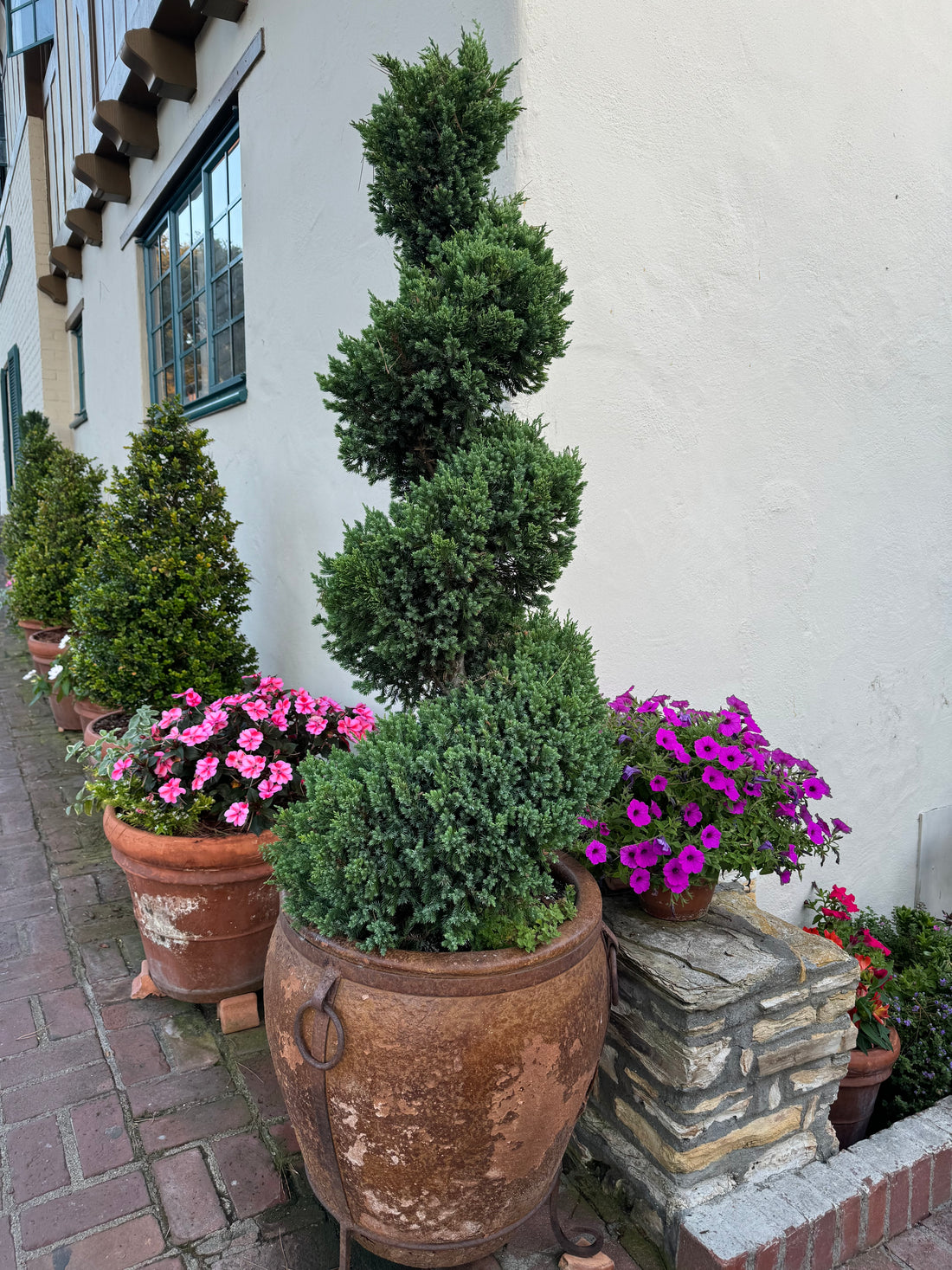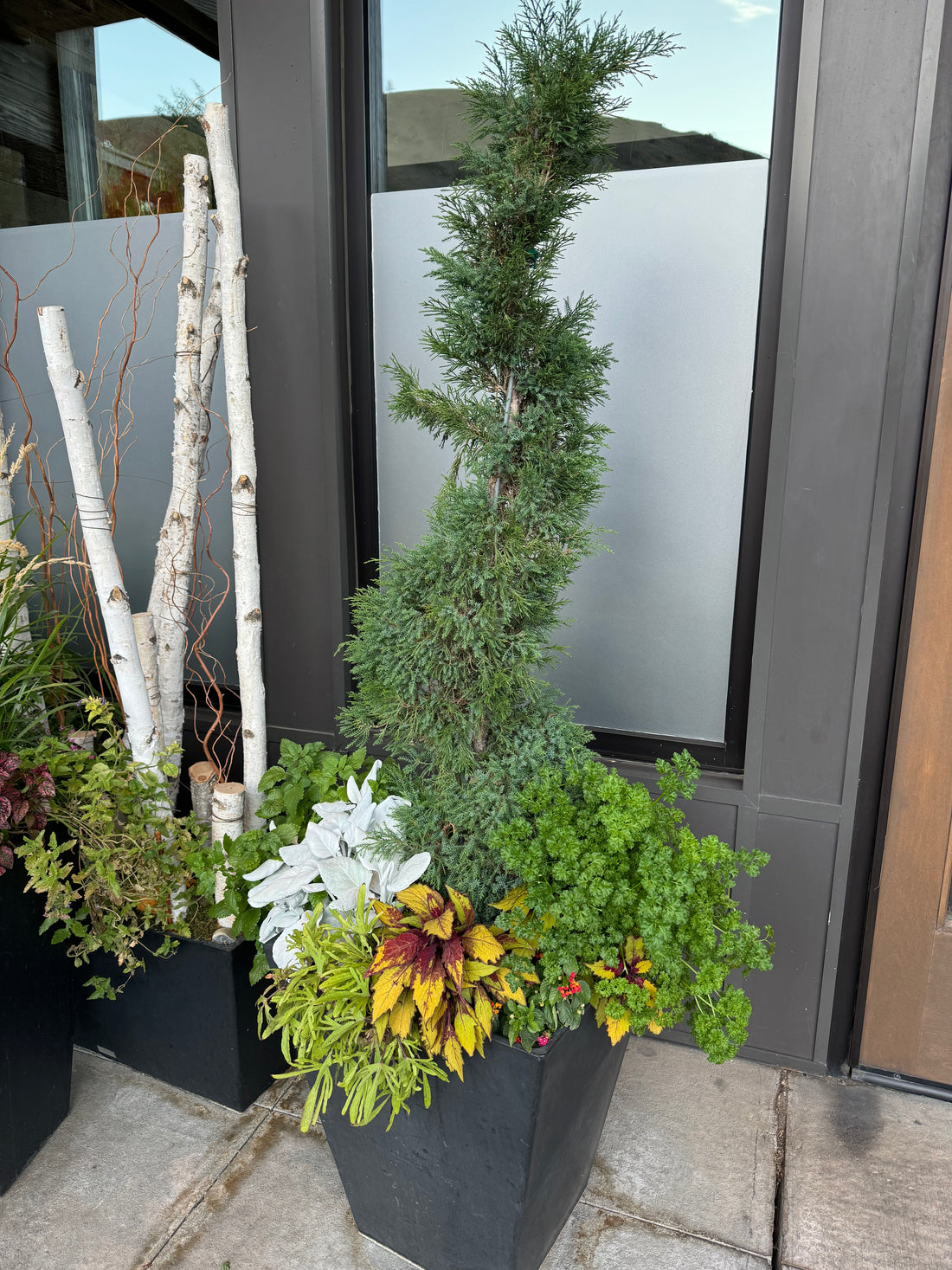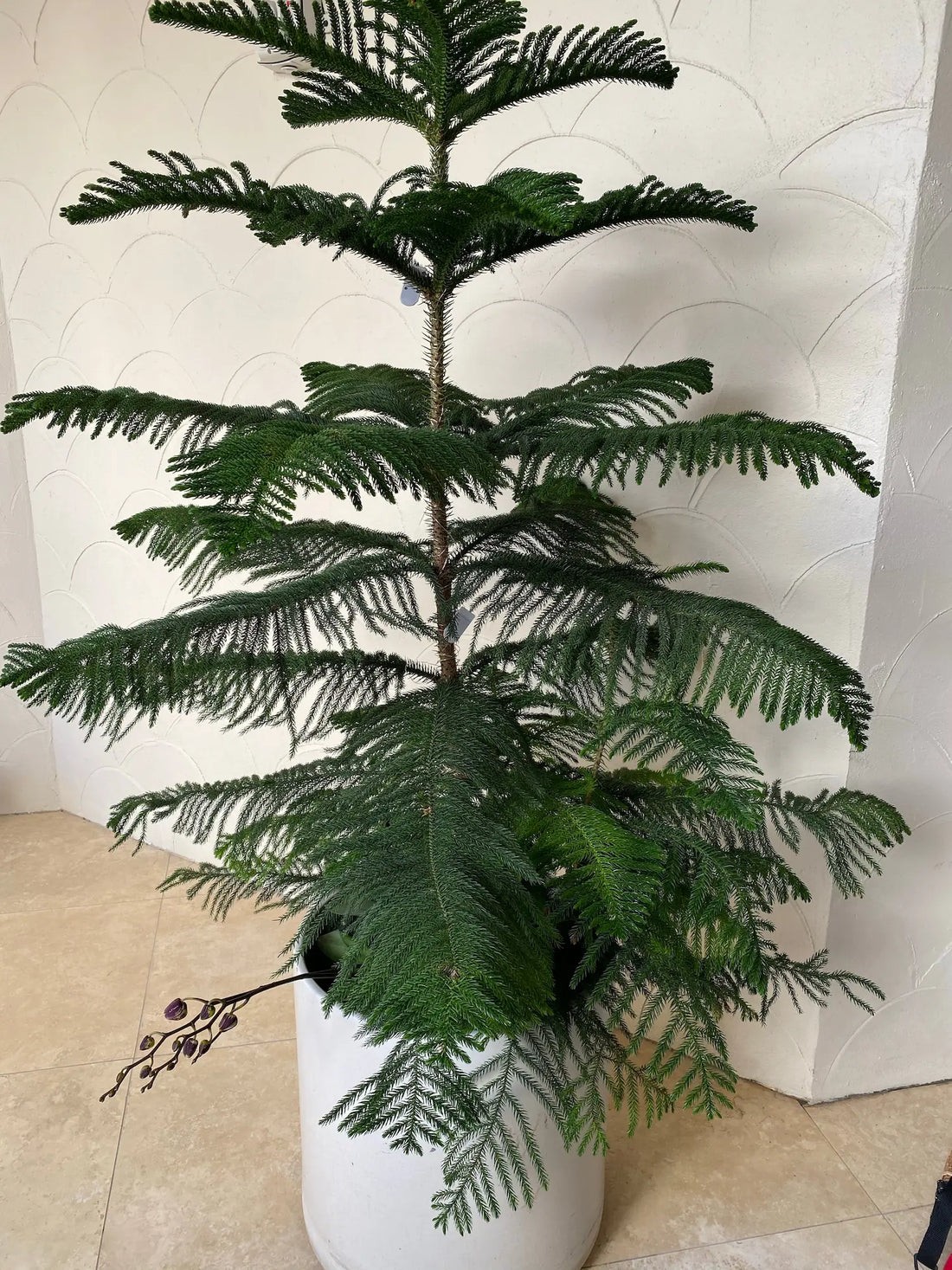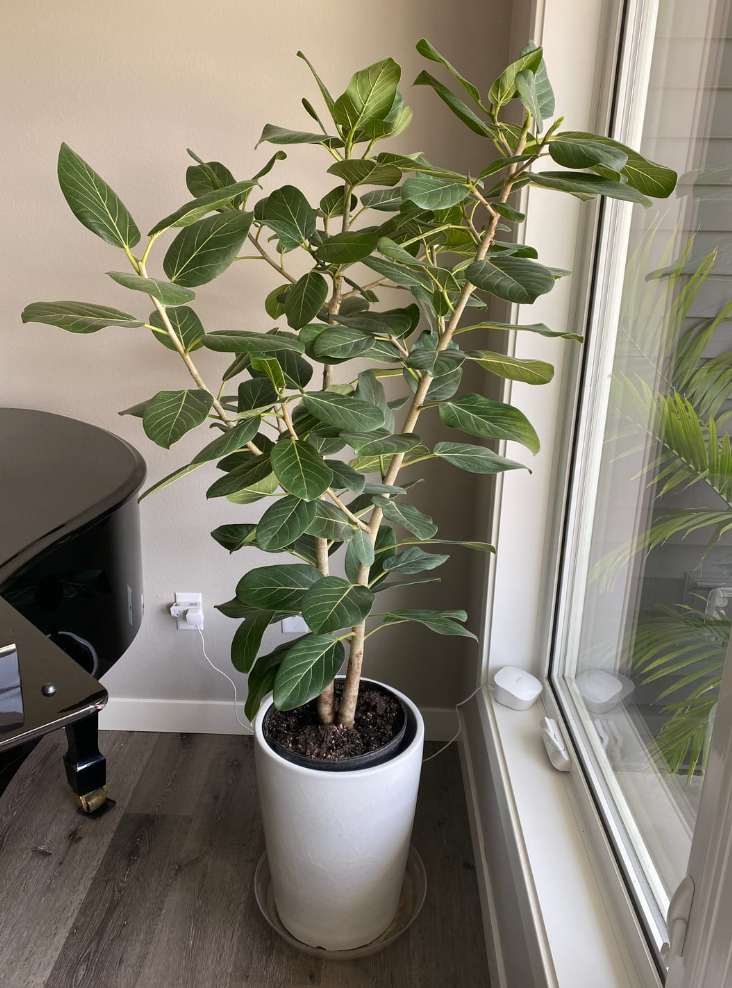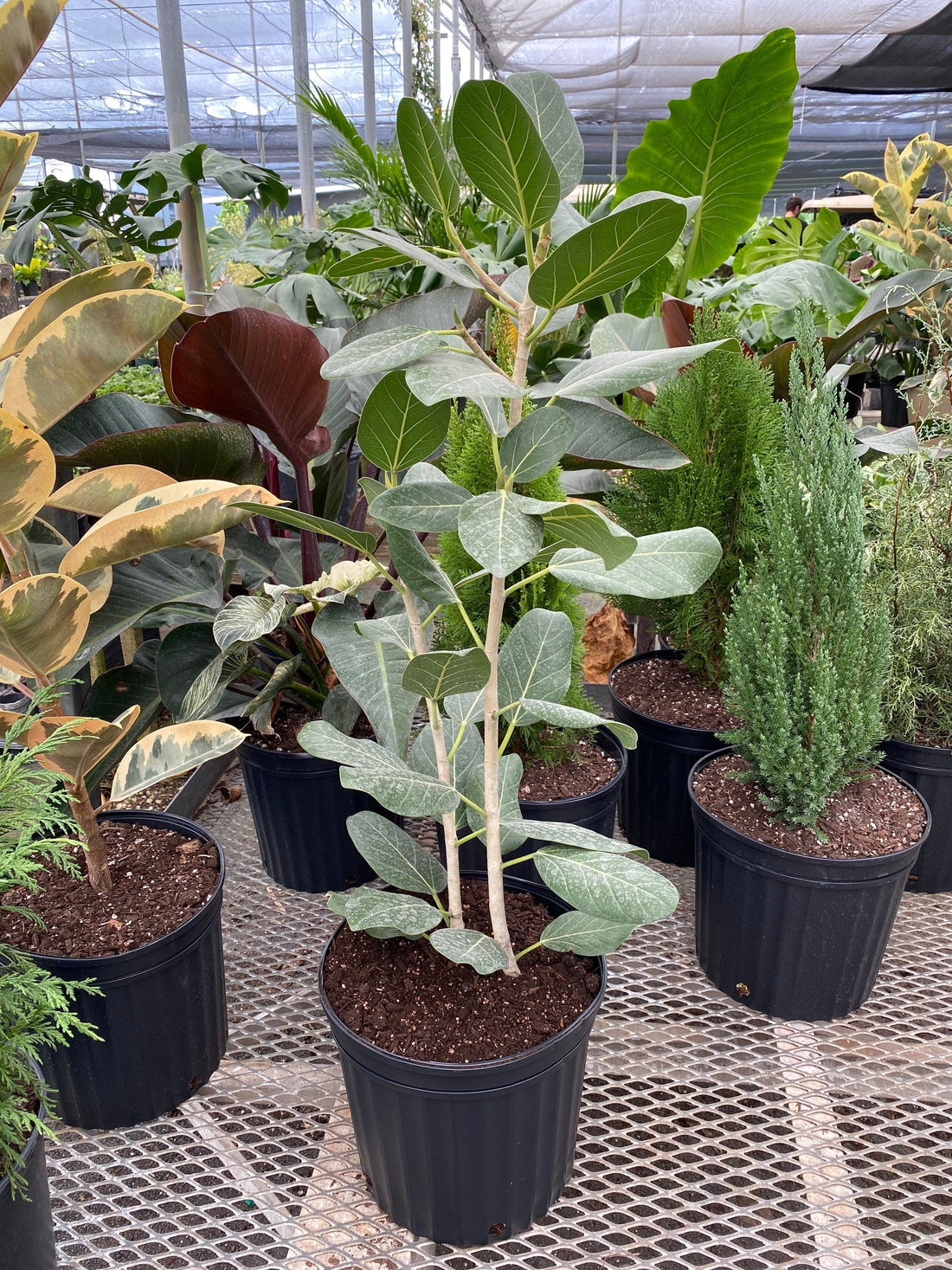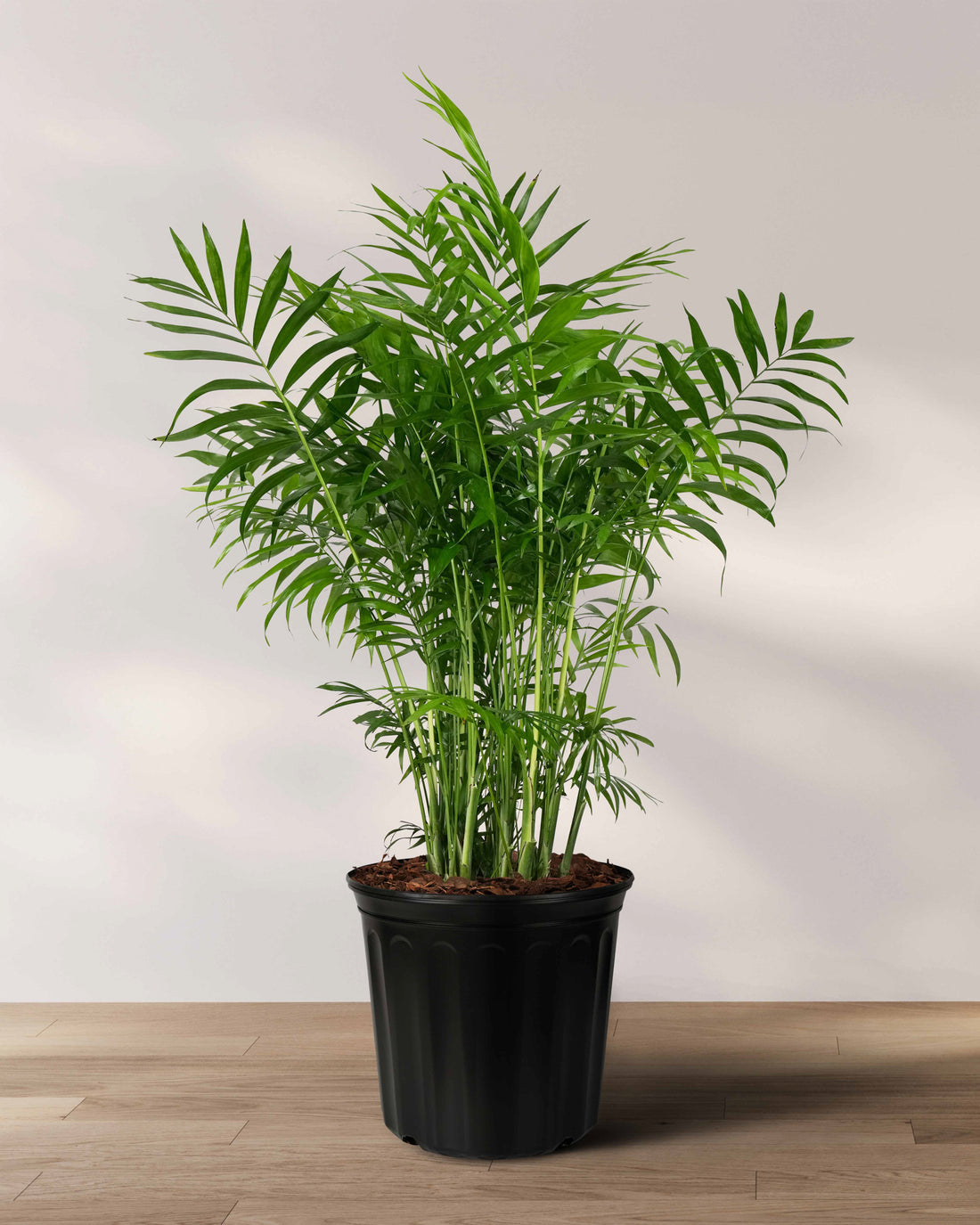Care Guide
GENERAL CARE, MY NEW PLANT ARRIVED - Thank you for trusting Eureka Farms with your recent purchase, our main objective is to ensure a great customer experience and deliver great quality plants for your enjoyment. Plants shipped online are in complete darkness for several days, is normal for plants to stress during this process, do not repot for 4 weeks, we recommend dropping the plant in its existing pot as is in a deco planter of your choice, allow your new arrival to gradually climatize to their new environment, humidity levels, lighting and temperatures.
WATER MANAGEMENT FOR FICUS TINEKE - Ficus plants are known to be drought tolerant, Ficus plants purchased for indoors use can be watered less frequent, however frequency of watering will depend on the size of the plant, humidity levels and rate of growth. One of the most common mistakes in the care of indoor plants is overwatering, indoor plants are far more tolerant to underwatering than overwatering, Improper watering can result in fungal issues and root rot. It is recommended to monitor your houseplants and water them when they need it, rather than on a schedule. When watering plants the objective is to maintain the soil moist but never soggy, a moisture meter is a great tool to utilize to reduce the guesswork, We recommend to sample the top soil an inch deep every 3-4 days, if you notice is still moist hold off on watering until it dries further, since most plants water needs may be different this is a good way to determine each individual plant water requirements.
Water Recommendations base on pot size, we suggest to utilize a soil probe initially to determine humidity levels and when to water.
6 inch Pot plants, every 5-7 Days, 10-12 inch Pot plants, every 7-12 days
LIGHTING INSTRUCTIONS - Ficus Trees generally require bright indirect light, this is one of the most important aspects of care, although they can adapt to lower lighting conditions it is not sufficient for the variegation blend to thrive, the alternative colors cream-pink can not photosynthesize and will gradually turn into more copper green. It is highly recommended to place the Ficus Tineke in bright indirect bright light in order for their leaves to remain vibrant, bright light is what encourages the beautiful variegation and blend of colors in the foliage. Partial to full sun exposure is acceptable only for short periods of time, Too much direct sun exposure will scorch its delicate leaves. You should place the Tineke near a window where the plant can receive the brightest available light, east, south, and west facing windows are the best options, we recommend to rotate the plant occasionally, this will allow the plant to receive bright light from different angles, it can minimize leaf drops from within the canopy and allow the plant to maintain even healthy growth all year round.
HUMIDITY - Many of our houseplants come from the tropics, where humidity is very high, generally the air in our homes is dry, occasional misting houseplants is a very simple and effective way to boost humidity, an easy solution to the risk of overwatering your plants. Ficus Rubber Tree is not very demanding when it comes to humidity, its thick rubber leaves can withstand lower levels of humidity longer than most tropical plants, in fact some varieties like the Green Island Ficus is widely used in roadways across south Florida and can withstand extreme heat and drought conditions all year round. Always pay attention to the color and texture of the leaves on your plant. Generally Plants with brown or dry leaf tips will benefit from regular misting to keep the plant happy and thriving, preferably in the mornings to allow the foliage to completely dry out during the day.
PLACEMENT AND TEMPERATURE - Selecting the right location for your plant indoors or outdoors is very important, micro climates can affect the health of the plant, make sure the plant does not receive air draft from near by AC/Heating vents, or warm air if close to a freezer, the foliage will dehydrate faster than it can hydrate from moisture in the air or in the soil, eventually turning brown and dropping, when plants are properly watered and care for and still display signs of wilting or seem sad it may help to relocate the plant to a different area for brighter indirect light. Please note most tropical plants are from the tropics, proper moisture is required for their health and survival, we highly recommend to bring your tropical plants indoors when temperatures are expected below 45s during winter months or above 90 during summer months, extreme weather can severely damage the plant.
FERTILIZING – No need to fertilize right away, We fertilize our plants during the production phase with slow release fertilizer which can last an additional 2-3 months supplying residual nutrients to the plant. Once you do decide to fertilize You may use a fertilizer formulated for interior plants, preferably a slow release fertilizer 180 days duration, fertilize during spring or fall base on label instructions.
CLEANING, REGULAR MAINTENANCE - Ficus plant leaves differ in sizes, the fig-leaf lyrata, burgundy, Tineke or Ruby offers larger size leaves and are easier to clean, however Moclame Microcarpa has a lot of small leaves and can be a bit more time consuming. Simply add a few drops of dish soap to a cup of water, wet a soft cloth and manually wipe off dust off the leaves, is a simple solution that is inexpensive and works well without damaging the plant.
How to grow a new branch - You may encourage your tree to branch in certain areas using a technique called notching, this process can create a more dense and bush canopy. To accomplish this, pick the area on the main stem were you would like a new branch to sprout, use a clean knife or shears to cut a ¼-inch notch in the trunk, within a few weeks you may see a bud forming and it will gradually start to grow into a branch.
How to Prune Ficus Tineke - Ficus Tineke does not need much pruning, pruning should be done first If you notice any diseased leaves, be sure to trim those off immediately, using a clean knife or shears. If pruning is desire to promote multiple branch growth it can be made just above any node, right about where a leaf attaches to a stem, This will reduce the size of the plant which may have caused a non uniform growth, and promote new growth from the point where the cut was made. You may also need to prune from time to time to control the tree’s size and shape. Before pruning be sure to identify the areas where cuts will be made, especially if you’re pruning to shape your tree. Try marking the areas you want to cut with colored strings or ribbons before cutting. Keep in mind that if you take more than 10% of the leaves or branches, your tree could experience shock, which could cause it to stop growing and droop for a few weeks, so you may want to prune in stages if you’re planning to make drastic changes. When pruning Ficus Plants place a towel under the areas being pruned to catch the sap, remember to wear gloves to avoid contact with the sap.
INSECTS OR DESEASES - Here’s another plus, Ficus plants are not regularly affected by pests. in the event that scale, mealy bugs, or mites are found to affect the plant, they can be controlled by wiping the infested area with a soapy solution, add a few drops of dish soap in a cup of water and wipe off the affected areas with a soft cloth, It can take several intermittent cleanings to rid the plant of the pests.
Horticultural oils can be sprayed directly onto the insects, A second and third treatment, if using oils, will be necessary. Space out the sprays at 3 week intervals to break up the mealybug life cycle. Both of these treatments together will be very effective.





















